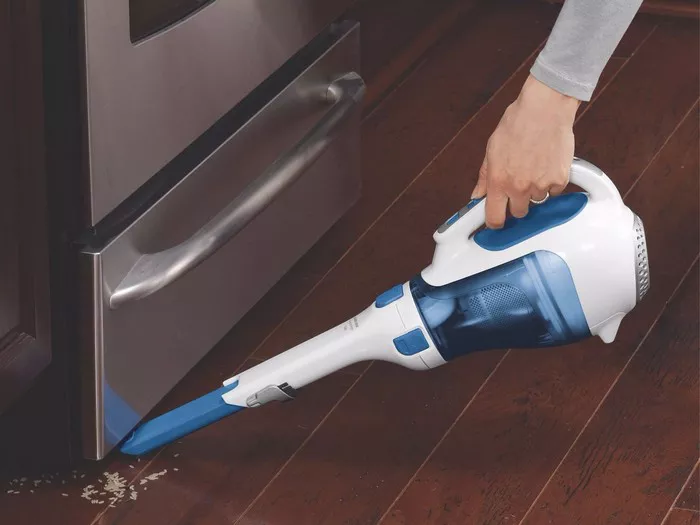Throughout history, cleanliness has been a vital aspect of human life. From ancient civilizations to modern society, the need for effective cleaning tools has remained constant. Early humans used primitive methods such as brooms made from twigs and brushes crafted from animal hair to sweep away dirt and debris from their living spaces. However, as civilizations advanced, so too did their cleaning methods.
Early Attempts at Cleaning Devices
In the 19th century, as urbanization and industrialization accelerated, the demand for more efficient cleaning solutions grew. This led to the development of early cleaning devices such as manual carpet sweepers and rudimentary suction devices. These devices, although an improvement over traditional methods, were still labor-intensive and lacked the power and efficiency of modern vacuum cleaners.
Invention of the Vacuum Cleaner
The invention of the vacuum cleaner marked a significant milestone in the history of cleaning technology. The late 19th century saw the emergence of several inventors who made pioneering contributions to the development of the vacuum cleaner. One such inventor was Daniel Hess, who patented a carpet sweeper with a rotating brush and suction mechanism in 1860. Another notable figure was Ives W. McGaffey, who patented a “sweeping machine” in 1869 that used a hand-operated bellows to create suction.
However, it was John S. Thurman who is credited with inventing the first motorized vacuum cleaner in 1899. Thurman’s invention used a gasoline-powered engine to create suction and was mounted on a horse-drawn carriage, making it suitable for large-scale cleaning tasks in commercial settings.
Evolution of Vacuum Cleaner Designs
Over the years, vacuum cleaner designs underwent significant evolution, driven by advancements in technology and engineering. Hand-operated models gave way to electrically powered machines, which were more efficient and easier to use. In 1907, James Murray Spangler, a janitor from Ohio, patented the first portable electric vacuum cleaner. Spangler’s design featured a motor, fan, and dust bag housed in a wooden box mounted on a pushcart.
Subsequent decades saw further innovations, including the introduction of upright vacuum cleaners, canister vacuum cleaners, and central vacuum systems. These advancements revolutionized the way people approached household cleaning, making it more convenient and less time-consuming.
Impact on Household Cleaning
The introduction of the vacuum cleaner had a profound impact on household cleaning practices. Gone were the days of labor-intensive sweeping and dusting; instead, homeowners could now rely on the power of suction to quickly and efficiently remove dirt and debris from their floors and carpets. This revolutionized cleaning routines, allowing people to maintain cleaner and healthier living environments with less effort.
Commercial and Industrial Applications
While initially designed for household use, vacuum cleaners soon found their way into commercial and industrial settings. The ability to quickly and effectively remove dust and debris made vacuum cleaners indispensable tools for cleaning large spaces such as offices, factories, and warehouses. Industrial-strength vacuum cleaners were developed to meet the unique challenges of these environments, featuring more powerful motors and larger dust capacities.
Technological Advancements
In recent years, vacuum cleaner technology has continued to evolve, driven by a combination of consumer demand and technological innovation. One notable advancement is the introduction of bagless vacuum cleaners, which eliminate the need for disposable vacuum bags and reduce waste. HEPA filters have also become standard features in many vacuum cleaners, helping to trap small particles and allergens for cleaner air.
Robotic vacuum cleaners represent another significant development in vacuum cleaner technology. These autonomous devices use sensors and navigation systems to navigate and clean floors without human intervention, making them ideal for busy households.
In addition to these advancements, vacuum cleaners are increasingly incorporating smart features such as Wi-Fi connectivity and voice control, allowing users to control their devices remotely and integrate them into smart home ecosystems.
Environmental Considerations
As concerns about environmental sustainability continue to grow, vacuum cleaner manufacturers are increasingly focused on incorporating eco-friendly features and materials into their products. This includes the use of recyclable materials, energy-efficient motors, and rechargeable batteries. Some manufacturers have also introduced eco-friendly cleaning solutions that minimize the use of harsh chemicals and reduce environmental impact.
Cultural Significance
The vacuum cleaner holds a unique place in popular culture, often symbolizing cleanliness and domesticity. It has been featured in countless movies, TV shows, and advertisements, often portrayed as an essential tool for maintaining a tidy home. In some cases, the vacuum cleaner has even been used as a comedic prop, highlighting its ubiquity in modern life.
Beyond its portrayal in media, the vacuum cleaner has also become a symbol of social status and technological prowess. Owning the latest and most advanced vacuum cleaner is often seen as a sign of affluence and sophistication, reflecting society’s obsession with cleanliness and convenience.
Future Trends
Looking ahead, the future of vacuum cleaner technology looks promising. Continued advancements in robotics, artificial intelligence, and materials science are likely to drive further innovation in vacuum cleaner design and functionality. We can expect to see more intelligent and autonomous cleaning devices that are capable of adapting to their environment and delivering superior cleaning performance.
Environmental sustainability will also continue to be a key focus for vacuum cleaner manufacturers, with an emphasis on reducing energy consumption, minimizing waste, and using eco-friendly materials. As consumers become more environmentally conscious, demand for green cleaning solutions is expected to grow, driving further investment in sustainable vacuum cleaner technologies.
Conclusion
In conclusion, the evolution of the vacuum cleaner has been a remarkable journey, from humble beginnings as a rudimentary suction device to sophisticated cleaning machines that are capable of keeping our homes and workplaces clean and healthy. As technology continues to advance and consumer preferences evolve, the vacuum cleaner will undoubtedly continue to play a central role in our lives, helping us maintain cleaner, healthier, and more sustainable environments for generations to come.

